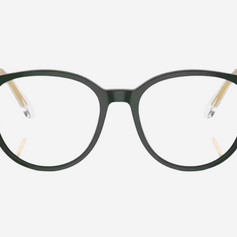We don’t think a lot about our eye health earlier in our life when we are in our 20’s or 30’s. We should start thinking and taking care of our health together with our eyes earlier in our life. Vision loss is not an inevitable part of getting older.
Especially in summertime, when we spend longer hours outside in sunlight. We usually remember to protect our skin by using the sun blocker. But we usually neglect our eyes, we don’t use any protection for our eyes.
UV Rays can hurt your eyes and excess exposure to sun can put you at risk for Eye Cancer, Cataracts, Sunburned Eyes, Growths on or Near the Eye (pterygium). Not only during the summer, but you need to protect your eyes in every season. Whenever you step outside the home, you need to wear sunglasses that block 100 % UV. Your eyes need protection even when it’s cloudy, because the UV rays are present even on cloudy days as well.
What are UV rays?
It's ultraviolet radiation, and in general people call it “UV light”. We cannot see the UV light, it’s completely invisible.
There are 3 categories of UV radiation-
- UVA,
- UVB,
- UVC
UVA – UVA radiation has the longest wavelength band and, relatively speaking, is the least harmful of the three radiations. It causes skin to tan. UVA have wavelength that range from 315 to 380 nm.
UVB – UVB has a shorter wavelength that ranges from 290 to 315 nm and a higher energy than UVA. If present in sufficient quantity, long enough duration or both, UVB can cause sunburn, photokeratitis, cataracts and retinal lesions.
UVC – UVC is still higher in energy, but is effectively filtered out by the earth’s ozone layer. UV Vacuum is present outside the earth’s atmosphere, but is filtered by the atmosphere. UVC have wavelengths that range from 200 to 290 nm. The shorter the wavelength, the more biologically harmful the radiation will be.
There are so many risk factors that contribute greater need for ultraviolet protection
- Geographic location – UV exposure is more near the equator in tropical areas.
- Altitude – UV exposure is greater in higher altitudes
- Time of day – UV exposure is greater when the sun is high in the sky between 10 AM-2 PM.
- Setting – UV exposure is more in open and reflective surfaces like snow & sand.
- Medications – People who are taking some medications are more susceptible to UV radiation: for ex – Sulfonamides, Tetracyclines, Diuretics, Tranquilizers, Oral Contraceptives etc.
- Work – UV exposure is greater for Welders, those working near UV lamps, such as dentists and dental technicians, nowadays UV lamps are even used for Nail Art.
There’s good news for you that prevention is simple – just wear sunglasses that block 99 % to 100 % of UVA and UVB radiation. Please note that you will need to consider some shopping tips, while purchasing your sunglasses:
- Check the label – This is a very essential point to remember to check the label/tag. The label should say either ‘99% or 100% protection from UVA & UVB radiation” or it may also say “protection from UV radiation up to 400 nm”. And they both are the same, as the latter means that it protects 100%.
- Get Larger Size – When you shop for sunglasses, buy oversized wraparound sunglasses. Which will give more coverage for your eyes and protect your eyes from entering UV rays from the sides.
- Polarized Sunglasses – Polarized Sunglasses reduce glare coming off reflective surfaces like water or pavement. Polarization does not protect you from the sun but it makes your activities like driving easier and safer. You can enjoy being around the water as the polarization will reduce the glare.
- Sunglasses don't have to be expensive for being effective. Even cheaper sunglasses can be equally effective. Make sure that you check the tag/label for 100% UV blocking, or protection up to 400nm.














